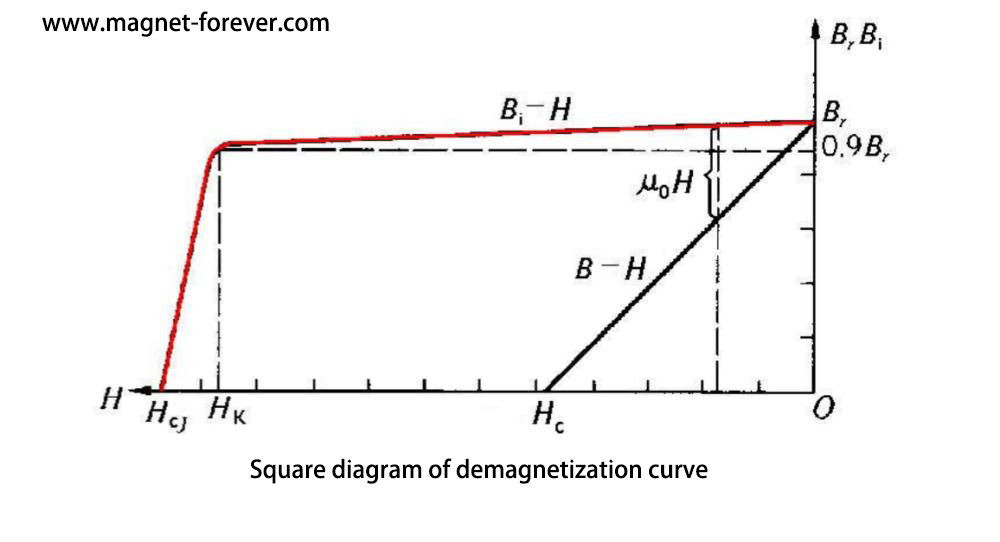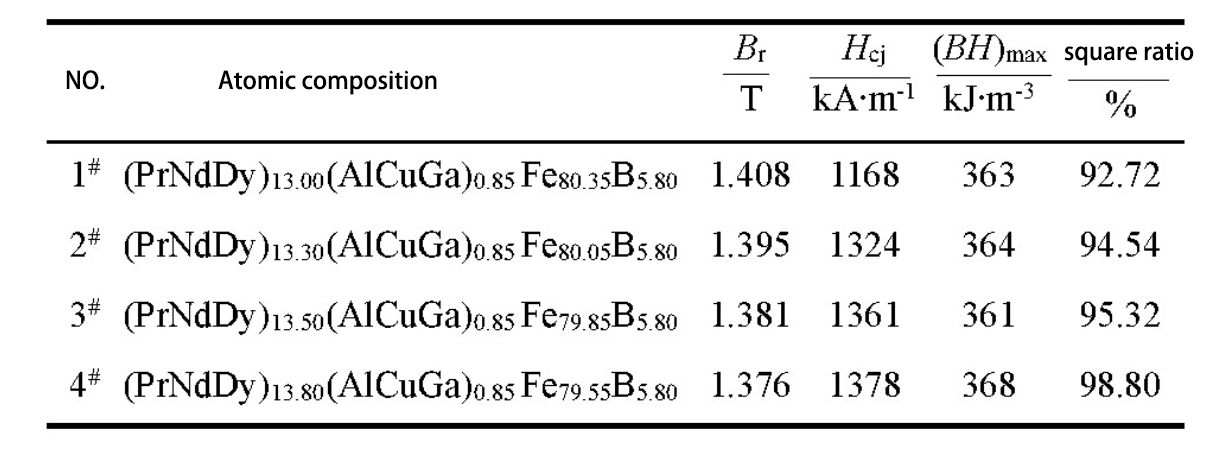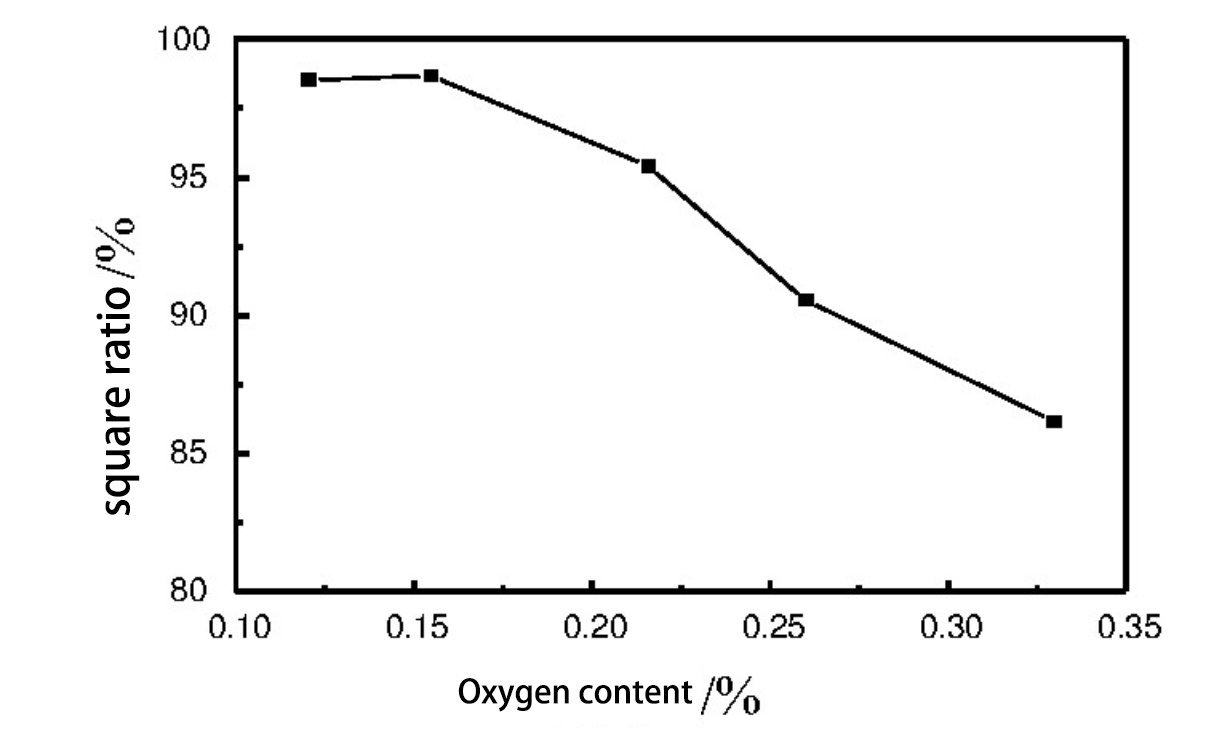Demagnetization curve quadrangle Q and knee point Hk
Everyone knows that the indicators for measuring the performance of neodymium iron magnets include remanence Br, coercivity HcB, intrinsic coercivity HcJ and maximum energy product (BH) max. In addition, the direction of demagnetization curve and Hk are also magnetic applications. Engineers are very concerned about two indicators. Today I will introduce the meaning and influencing factors of these two indicators.
The intrinsic magnetic induction intensity generated by the permanent magnet material after being magnetized under the action of an external magnetic field is called intrinsic magnetic induction intensity Bi, also known as magnetic polarization intensity J. The curve of the magnet's magnetic polarization intensity J and the external magnetic field intensity H can reflect the change of the inherent magnetic properties of the permanent magnet material. It is called the intrinsic demagnetization curve, or the intrinsic curve for short, and is also called the J~H demagnetization curve.

When the magnetic polarization intensity J on the demagnetization curve is 0, the corresponding magnetic field intensity is called the intrinsic coercive force HcJ. The value of intrinsic coercivity reflects the size of the anti-demagnetization ability of the permanent magnet material.
Knee point Hk
From the figure, it is not difficult to find that when the external magnetic field keeps increasing, the magnetic induction intensity/magnetic polarization intensity of the magnet decreases very slowly, but when the external magnetic field is greater than a certain value, the magnetic induction intensity of the magnet decreases rapidly.
Usually we call the point of Ji=0.9Br or 0.8Br on the demagnetization curve as the bending point or knee point of the demagnetization curve. The corresponding magnetic field at this point is Hk, also known as the knee coercivity. When the external magnetic field is greater than Hk, a large irreversible loss of magnet performance will occur, which is also the reason why the Hk value has attracted much attention.
Controversy about the position of the knee
There have been many discussions about whether the demagnetization curve bend point should be Ji=0.9Br or Ji=0.8Br or other positions, and scholars have different attitudes. IEC accepts the definition of Hk proposed by M.Katter, but it only applies to neodymium iron boron magnets with HcJ greater than 400kA/M (5000 Oe). The value of Hk is called HDx, where x represents the reduction percentage on the B axis, for example , HD10 represents the point where the value of HD is 10% below Br, that is, at 0.9Br. (See IEC 60404-8-1:2015)
Squareness Q
We use the ratio of Hk to HcJ (Hk/HcJ) to represent the squareness Q of the demagnetization curve. The value of Q ranges from 0 to 1. The closer Q is to 1, the closer the demagnetization curve is to a square (that is, the figure above). The shorter the orange line segment is, the better), usually we consider products with squareness Q>0.9 to be qualified products.
The relationship between squareness and maximum magnetic energy product and recoil permeability
Q=4μ0(BH)max/Jr2, it can be seen that the squareness Q has a positive correlation with the maximum energy product (BH)max of the neodymium iron boron permanent magnet material, that is, under the same Br conditions, the greater the Q, the greater the maximum energy product ( The larger the BH)max, the Q value determines the maximum magnetic energy product (BH)max of the magnet.
Q=1/μrec, the squareness Q is inversely proportional to the magnet's recoil permeability μrec. The larger the Q, the closer the recoil permeability μrec is to 1, and the stronger the material will resist interference from external magnetic fields and ambient temperature. The better its stability.
Factors affecting magnet squareness
Factors such as the purity and proportion of raw materials, the uniformity of powder particles, the sintering and pressing process and other factors will affect the squareness of the NdFeB magnet. If the crystal grain grows abnormally or the crystal grain is irregular, the squareness of the magnet will decrease. . Some researchers [1] did the influence of rare earth and oxygen content on the squareness of demagnetization curve of sintered Nd-Fe-B magnets, and found that:
1. Under the same process conditions, with the gradual increase of the content of rare earth elements, Br decreases, Hcj increases, (BH)max is basically unchanged, and the squareness increases significantly from 92.72% to 98.80%.

2. Repeat the test on the sample and keep the oxygen content of the system at 0.01%, 0.02%, 0.03%, 0.04%, 0.05% during jet milling, and the corresponding squareness is 98.53%, 98.68%, 95.41%, 90.55%, 86.17 %. They are numbered 3-1#, 3-2#, 3-3#, 3-4#, 3-5#, and the relationship between squareness and oxygen content of the magnet is shown in the figure.

Magnet Forever offers you more professional magnet knowledge.
